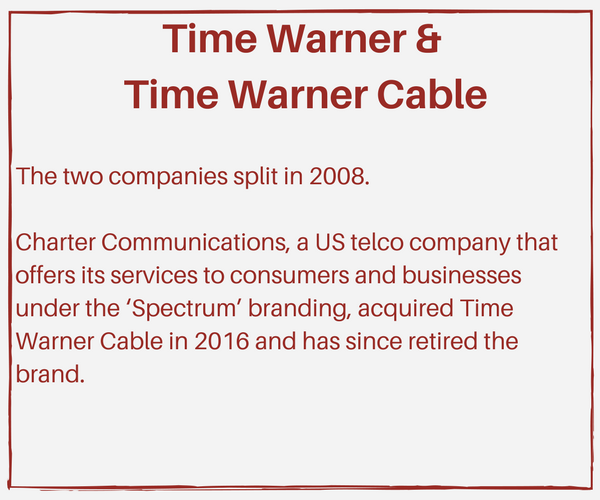
Mergers & Acquisitions 2018 – Part 2
In the first of a new two-part series, we looked at who’s been active in the mergers and acquisitions market, focusing on three major deals that have caught our eye so far in 2018: Disney moving to acquire Fox, Belden’s purchase of SAM and the sale of Vubiquity to Amdocs.
Here, in the second part of the series, we look at some of the more important acquisitions over the past few years but start with a summary of a deal that is in the spotlight right now (at the time of writing).
What could be the biggest and most important media industry deal of recent times is up for judgment from next week, in a trial that could last up to two months, according to US District Judge Richard Leon.
For the businesses involved – and indeed the rest of the industry and millions of consumers around the world – it’s a case worth watching.
AT&T and their proposed $85 billion acquisition of Time Warner
According to many, what’s about to unfold is huge.
AT&T want to buy Time Warner but the deal is about to go to court for review and judgment by the US Department of Justice (DoJ).
Amy Yong, a research analyst at the investment firm Macquarie, put it like this:
Why the trial?
AT&T
- Owns DirecTV and other products
- Has 26 million subscribers
- Wants to pair its mobile and satellite distribution networks with Time Warner’s cable and movie holdings, including HBO and CNN, among many other channels
- Argues that merging with a major content company is necessary to compete against the reach and resources of tech giants including Netflix and Amazon
The U.S. Justice Department
- Filed a lawsuit in November to stop AT&T from acquiring Time Warner
- Says the deal could raise prices for rivals and pay-TV subscribers while hampering the development of online video
- Has demanded the sale of certain assets before a merger is approved
The New York Times said:
And The Economist:
We’ll stay on top of proceedings and keep you posted with the fall-out.
Amazon acquiring Elemental

One deal that has gone through and is becoming increasingly important was Amazon's very smart purchase in 2015 of video processing company Elemental Technologies, which was acquired for $296 million.
At the end of 2017, we examined what that move entailed and how it's shaping up, a few years on.
In a nutshell, the consumption of online video rose by a fifth last year, driven by a 35 per cent increase in viewing on mobile devices to an average of almost half an hour per day, and Amazon Web Services (AWS) has introduced an integrated suite of new processing tools for video publishers that puts pressure on traditional service providers in a major way.
Amazon and Elemental had already been partners for four years before the former combined the latter’s solutions with the AWS platform.
Founded in 2006, Elemental helped media companies including HBO and ESPN to process video content across mobile devices, and enabled more than 700 clients take video that was destined for legacy video distribution systems (IPTV, managed cable network, broadcast over the air or satellite delivery) and convert it for delivery over IP to multiscreen devices.
Elemental adapted video for online streaming across devices, from smartphones to tablets, to PCs to full-sized TVs. Its clients included HBO, Comcast, ESPN and many others. The company grew rapidly with Amazon's backing.
The move could result in Amazon disrupting another industry.
AT&T’s acquisition of DirecTV
Another huge acquisition in recent years, and another involving AT&T, was the company’s purchase of DirecTV, the largest satellite TV provider in the US, which, like Amazon’s purchase of Elemental, was completed in 2015.
Michael Weinberg, vice-president of Public Knowledge, a not-for-profit Washington DC-based public interest group that monitors and comments on competition and choice in the digital marketplace, said at the time:
The Federal Communications Commission (FCC) ratified the deal with the company having to make some concessions relating to its broadband services and net neutrality.
The acquisition made AT&T America’s largest pay TV provider, with more than 26 million total subscribers (20 million from DirecTV and about 6 million from AT&T’s native U-Verse service).
AT&T paid $48.5 billion for DirecTV in both stock and cash, and took over debts, meaning the overall value of the deal exceeded $67 billion.
Negotiations for that acquisition opened at around the same time as...
Comcast's proposed – but, ultimately, ill-fated – acquisition of Time Warner Cable
...in a deal that would have merged the two largest cable companies in the US and was valued at $45 billion.
The US Department of Justice blocked the takeover, however.
Brian Roberts, Comcast CEO, said: “We structured this deal so that if the government didn’t agree, we could walk away.”
The government didn’t agree, so Comcast walked away.

But Comcast did acquire NBCUniversal...and buy into mobile
Comcast’s acquisition of NBCUniversal in 2011 created a $30 billion media giant.
It took Comcast more than 13 months to work through the regulatory review process before the deal was approved by the FCC and DoJ.
More recently, Comcast has bought into mobile services. In 2017, the US government said that the company had bought $1.7 billion in wireless spectrum controlled by TV broadcasters as part of a major reallocation of the nation's airwaves for smartphones and mobile devices.
The spectrum is used for Comcast's smartphone business, Xfinity Mobile, which enables the company to offer its own streaming TV service across platforms, while keeping customers on a network it manages.

In The Frame - April '23

In The Frame - March '23
